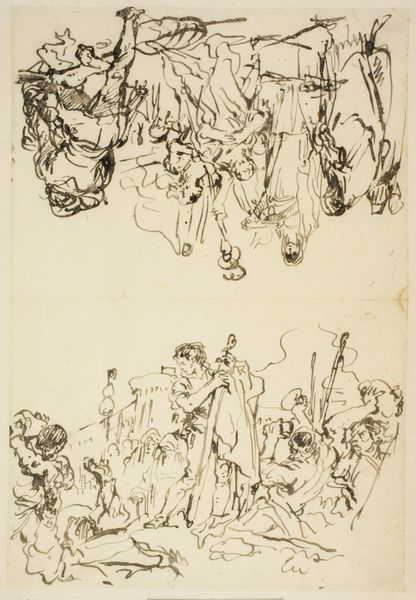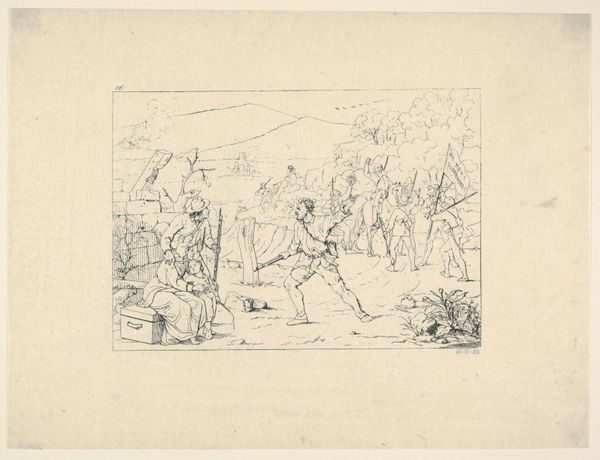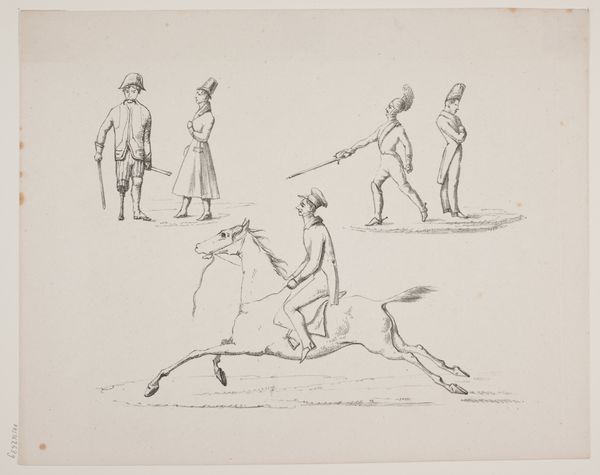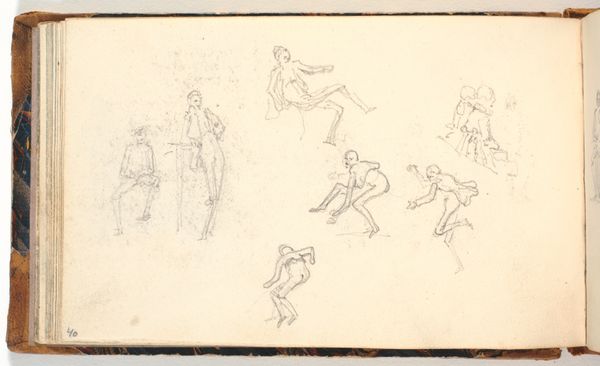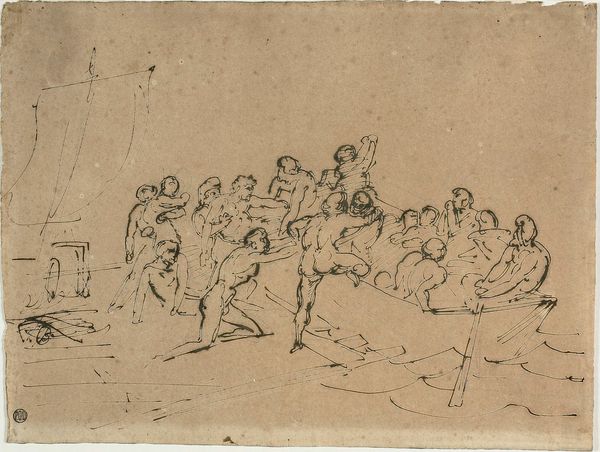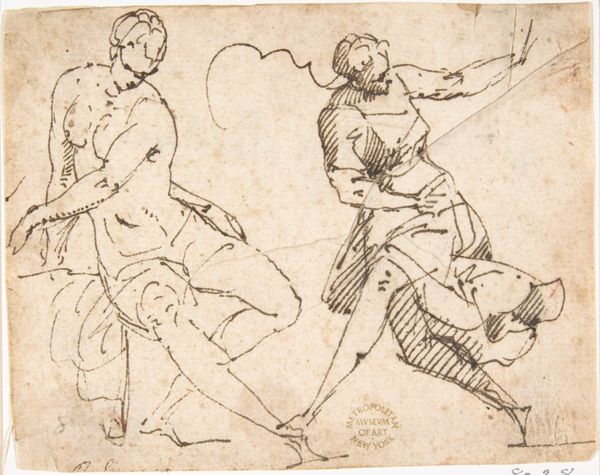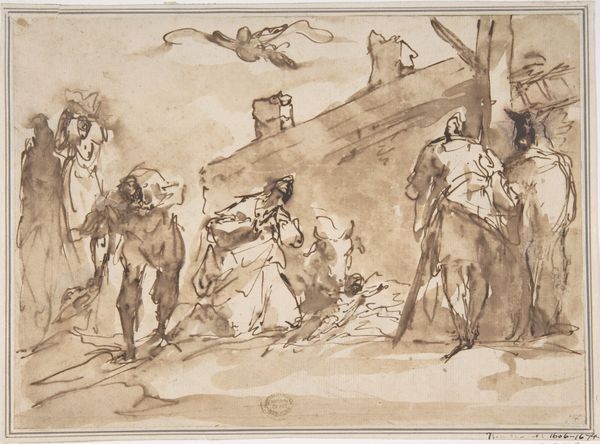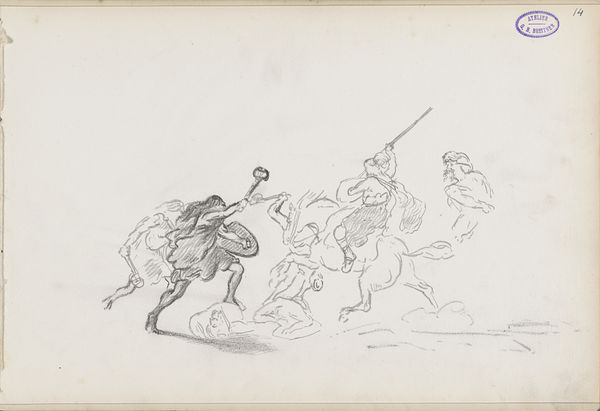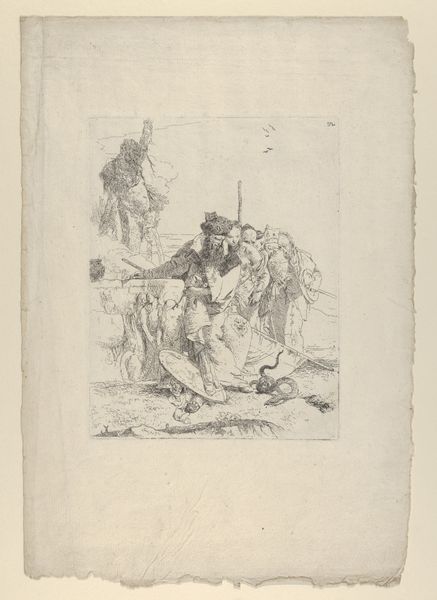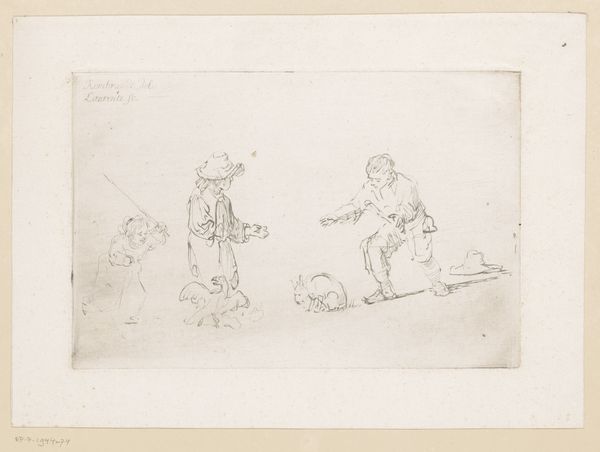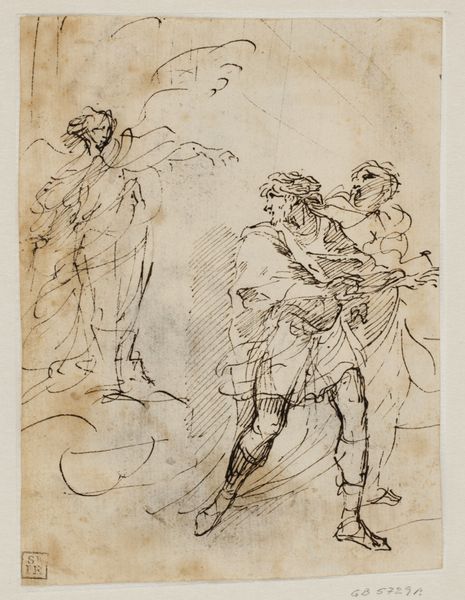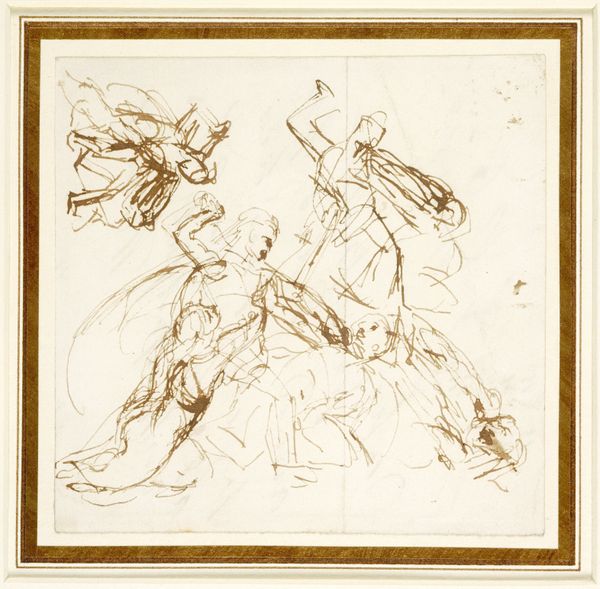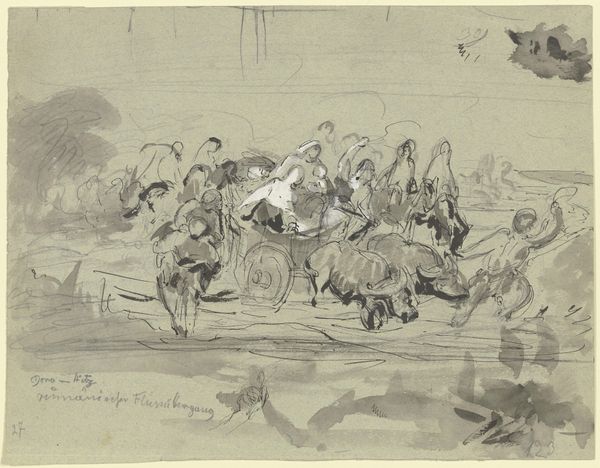
Five studies of stonemasons or blacksmiths working in a forge 1548 - 1628
0:00
0:00
drawing, ink
#
drawing
#
figuration
#
11_renaissance
#
ink
#
genre-painting
#
italian-renaissance
Dimensions: 174 mm (height) x 163 mm (width) (bladmaal)
Editor: This is "Five studies of stonemasons or blacksmiths working in a forge," an ink drawing by Jacopo Palma, dating sometime between 1548 and 1628. There’s such immediacy and energy in the lines! What stands out to you about this piece? Curator: Note the strategic use of line and volume, form and absence. See how the figures emerge, the hatching defining their musculature, yet dissolved into void with swift pen strokes. Consider also how each body echoes or resists others—a conversation strictly on the plane of forms, of graphic action. Do you observe similar patterns? Editor: I see that, especially how some figures are barely outlined while others have more detailed shading. Is that contrast intentional? Curator: It pushes the dynamism. It gives you five bodies caught at varied instants. But also note what ties them—the common medium, ink on paper, becomes material support of shared exertion and links these individual events within a common formal enterprise. Does the use of this humble material change how you view these figures or activities depicted? Editor: It makes me think more about the artistic process itself. Less about blacksmithing, more about how the artist is practicing different poses and techniques. Curator: Precisely. And how do those swift choices of hatching, weighting certain anatomical zones against dissolving outlines, serve that formal practice you observe? How would it feel in oils, differently? Editor: An oil painting would feel more finished, grander, maybe even staged. This feels like it's about the act of observation, capturing fleeting movements. Curator: It reminds us how form precedes subject sometimes. Thanks to close inspection. Editor: This drawing highlights the relationship between pure line and form, bringing focus to its intrinsic aesthetic values rather than social context, thank you for this analysis!
Comments
No comments
Be the first to comment and join the conversation on the ultimate creative platform.
